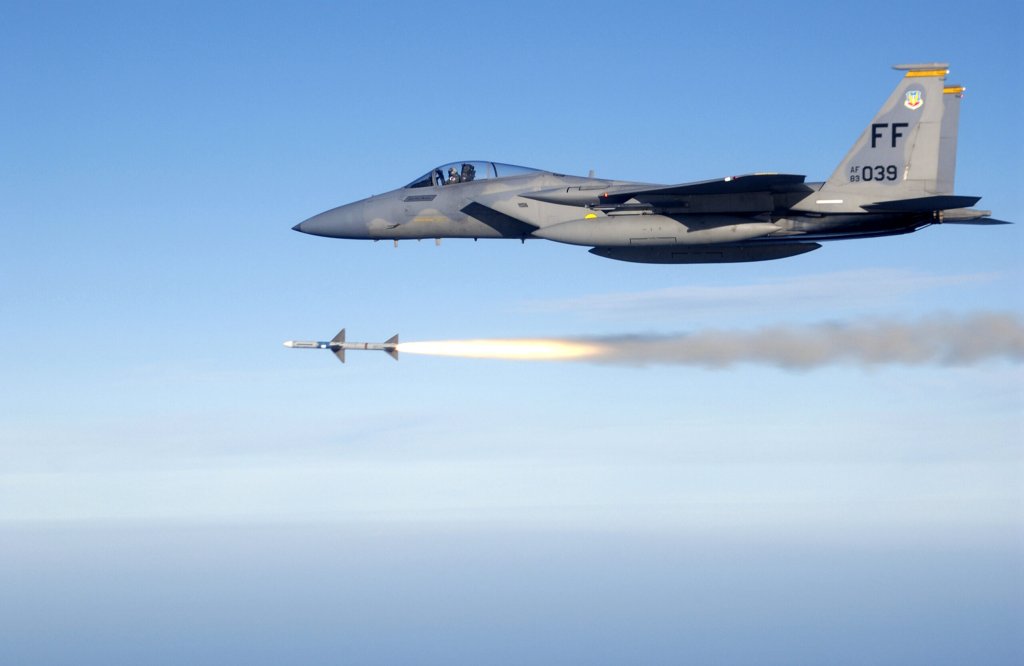Before the development of the F-22 Raptor, the F-15 Eagle ruled the skies. It replaced the vaunted F-111 as the U.S. military’s primary fighter bomber and, for much of its life, it was the fast-moving air superiority fighter, king of all air superiority fighters. In much of the world, it still rules — and there are many, many reasons why. The F-15 was designed to fly fast and deep into the heart of enemy territory to clear the skies of pesky enemy plane. After Vietnam proved the need for a maneuverable airframe that could evade surface-to-air missiles and engage enemy fighters, the F-15 was developed with radar, missiles, and – most importantly – a gun.
Those are just a few of the F-15 features, but the highlights of its career are what makes the airframe a legend.
1. It is fast.
Boy, is the F-15 fast. Imagine being about 43 years old and getting laid off and replaced in favor of a younger employee who is barely of age. Welcome to the world of the F-15, whose top speed is above 1,800 mph. Its replacement, the F-22, tops out at just above 1,400. With its weight and speed, once it achieves lift in takeoff, it can shoot up at an almost 90-degree angle.
Too bad sight is the first to go. That’s the primary advantage of the F-22 and F-35, who are both slower by far. The F-15’s cruising speed is just below the speed of sound. The bird is so fast, some analysts think it’s more than a match for Russia’s fifth-generation fighters.

(U.S. Air Force)
2. It could take out satellites in space.
When the United States wanted to include destroying Russian satellites as part of its war plans, it had to take into account the fact that the Russians could detect a ground-to-orbit missile launch. So the U.S. developed an antisatellite missile designed to be fired by an F-15.
The system was successfully tested by Air Force Maj. Wilbert D. “Doug” Pearson, who is still the only pilot with an air-to-orbit kill.

(U.S. Air Force)
3. Versatility.
If you’re looking for an all-weather, maneuverable, super-fast airframe that can carry a LOT of missiles, ground bombs, avionics, more fuel, advanced radar, and probably more, you might want to consider the F-15 and its five variants. Though two are designed to be trainers, the others are design for air superiority and fulfillment of a dual fighter role, supporting troops on the ground.
But even the F-15E Strike Eagle can handle some air-to-air combat, as it proved during Desert Storm.
Hell, the plane is so well-built, it can even fly with significant stability after losing a wing.
4. It kills.
The F-15 was one of the first airframes that could track multiple enemy targets simultaneously from ranges of more than 100 miles away. Once closed in, the fighter can pop off enemies with its six-barrel, air-cooled, electrically fired M-61 vulcan cannon, along with its impressive array of missiles and ground munitions.

5. Its impressive kill record.
By all substantiated accounts, the F-15’s record in combat is a whopping 104 to zero. While some enemy combatants claim F-15 kills, none have ever been able to provide actual evidence. The F-15 and its variants were used to great effect by Israel against Syria and Lebanon, the United States against Iraq, and the Saudis against Iran. The F-15 was also the airframe Israel used to destroy an Iraqi nuclear facility during Operation Opera.
Feature image: U.S. Air Force photo/Master Sgt. Andy Dunaway


